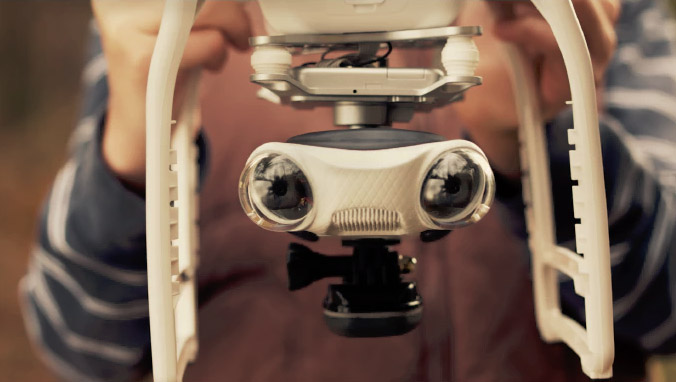Every day, people around the world wish they were somewhere else: With friends on a trip, with family on a special day, on a tropical island relaxing, in the depths of a balmy jungle exploring — wherever. Usually, they feel this way to get away from the mundane of the current situation and while smartphone have given most people the power to live stream, it isn’t as immersive
 In the age of virtual reality of experience, it’s no surprise that the team at Vairdo developed EYSE, a VR-enhanced camera with dual 5MP cameras, an internal speaker and microphone that lets user live stream stereoscopic video others can enjoy with a VR headset. EYSE has a wide range of applications: It can be used to be present at far-off birthday parties and family gatherings, experience the wonder of drone flight first-hand, for better one-on-one instruction, to get an alternate, more aquatic view of the world, remotely monitor the home, and even treat phobias through immersion.
In the age of virtual reality of experience, it’s no surprise that the team at Vairdo developed EYSE, a VR-enhanced camera with dual 5MP cameras, an internal speaker and microphone that lets user live stream stereoscopic video others can enjoy with a VR headset. EYSE has a wide range of applications: It can be used to be present at far-off birthday parties and family gatherings, experience the wonder of drone flight first-hand, for better one-on-one instruction, to get an alternate, more aquatic view of the world, remotely monitor the home, and even treat phobias through immersion.

 Movement is the biggest obstacle yet to be solved for true virtual reality experiences. While there are locomotion setups on the market that attempt to address the issue, not many people have the money nor the space to install and maintain them as they’re usually larger.
Movement is the biggest obstacle yet to be solved for true virtual reality experiences. While there are locomotion setups on the market that attempt to address the issue, not many people have the money nor the space to install and maintain them as they’re usually larger.